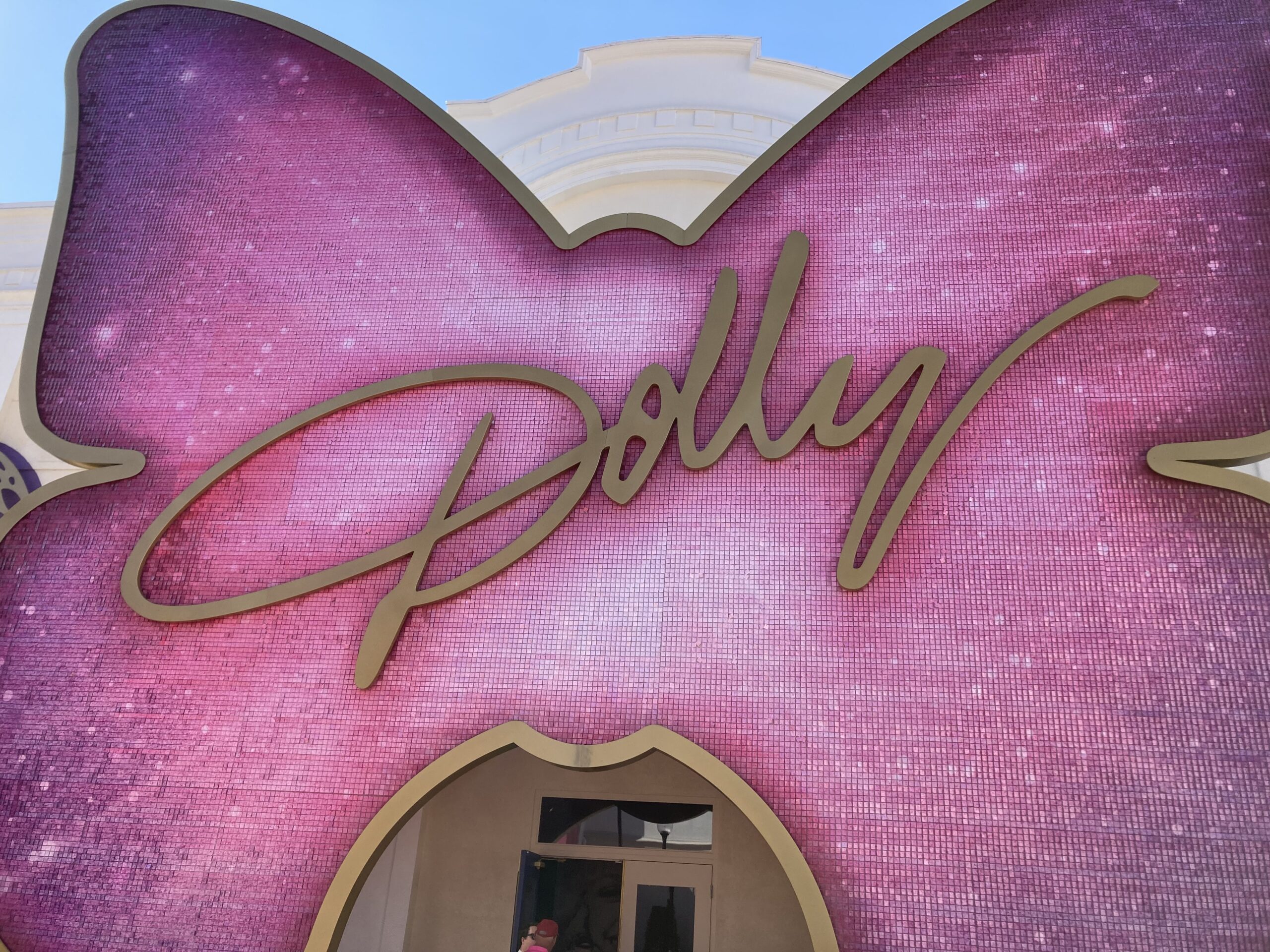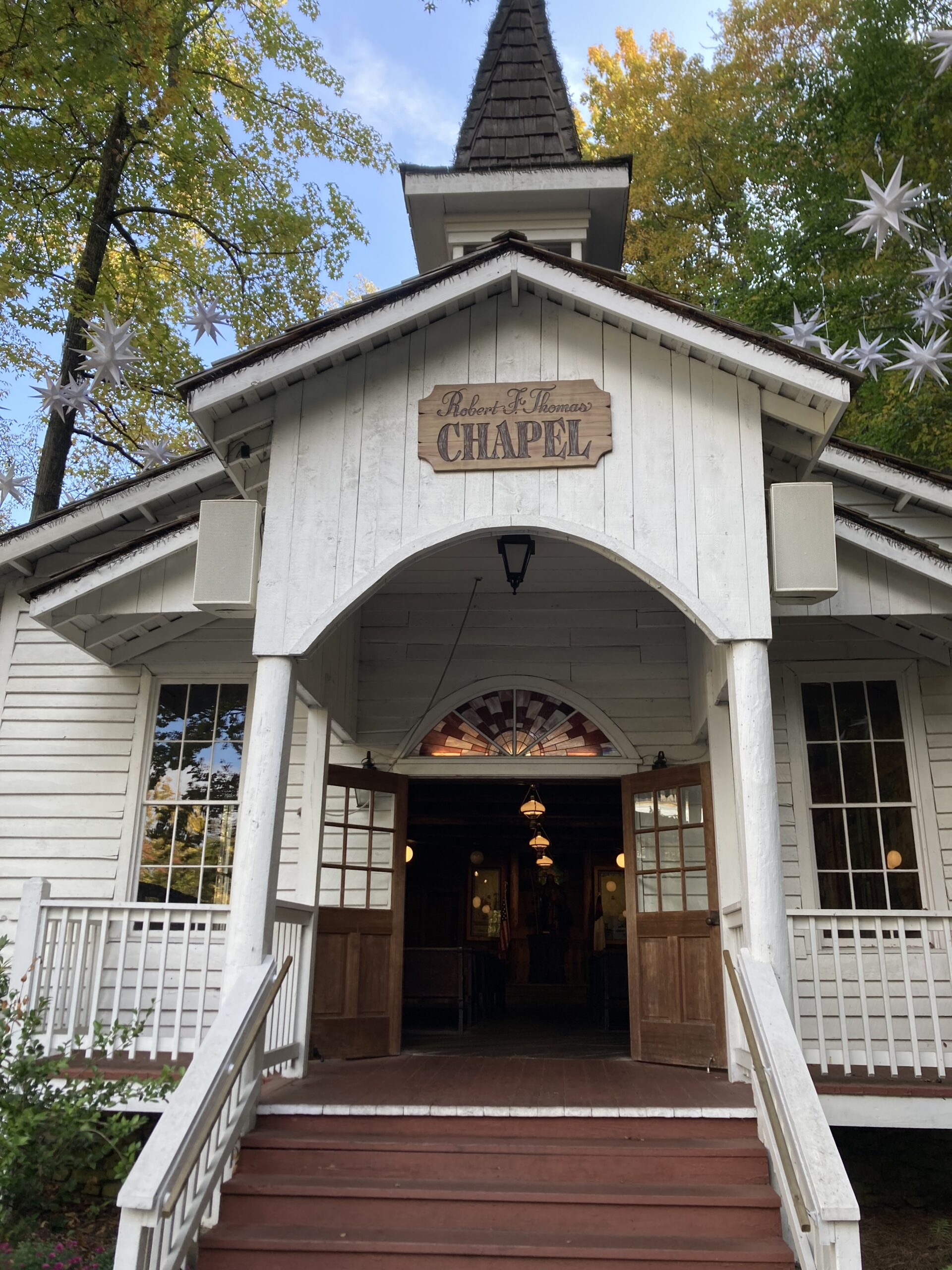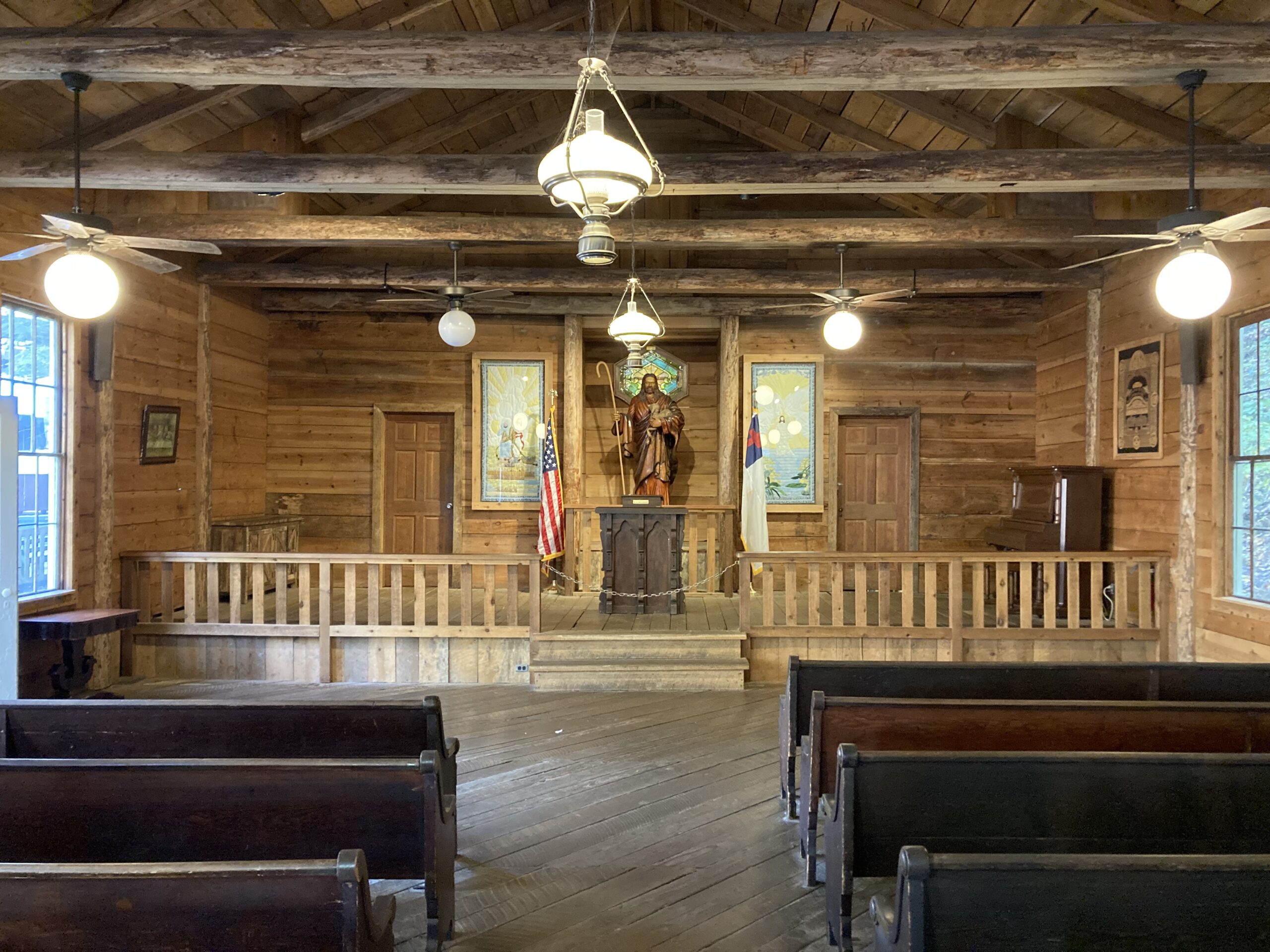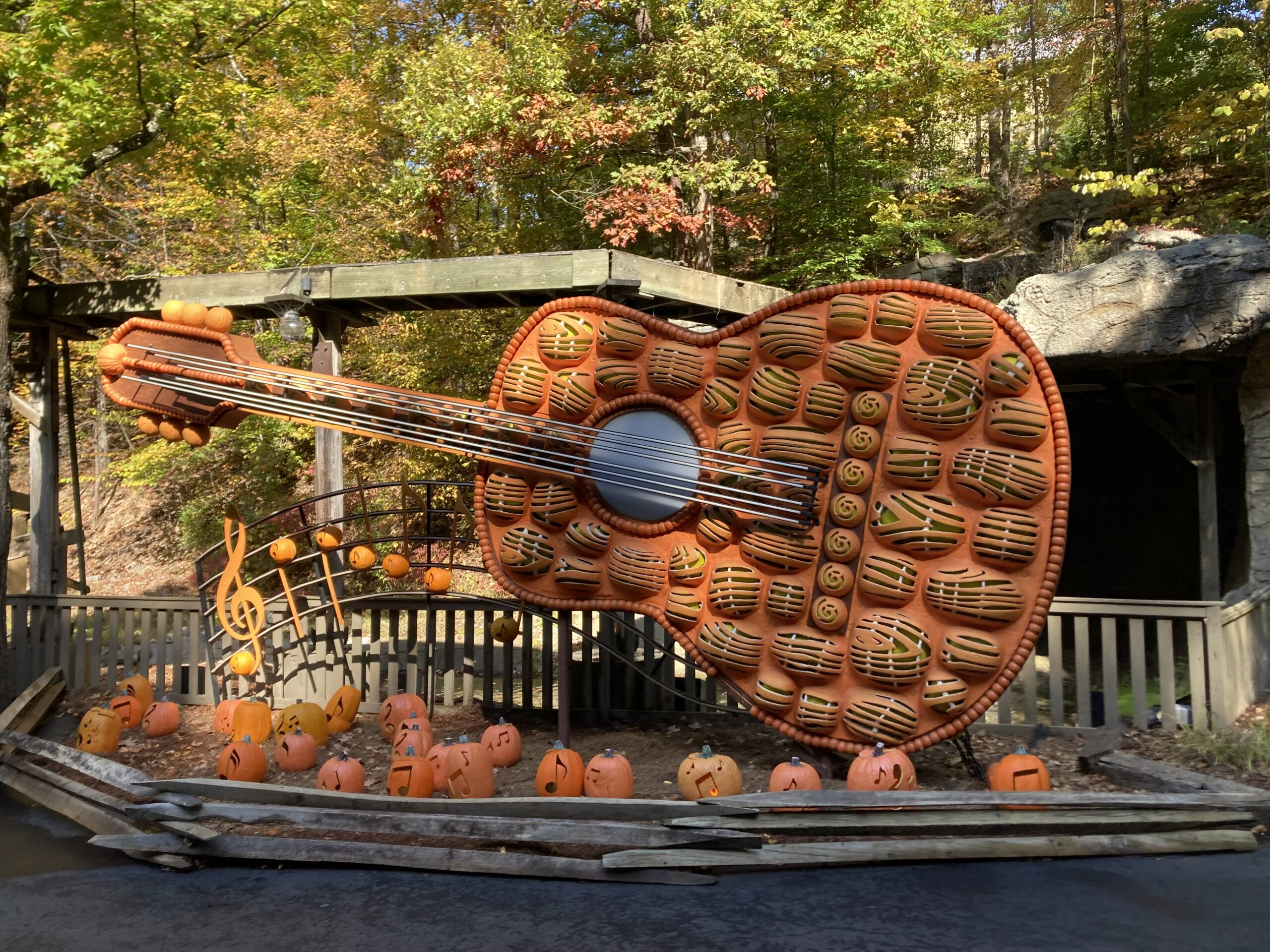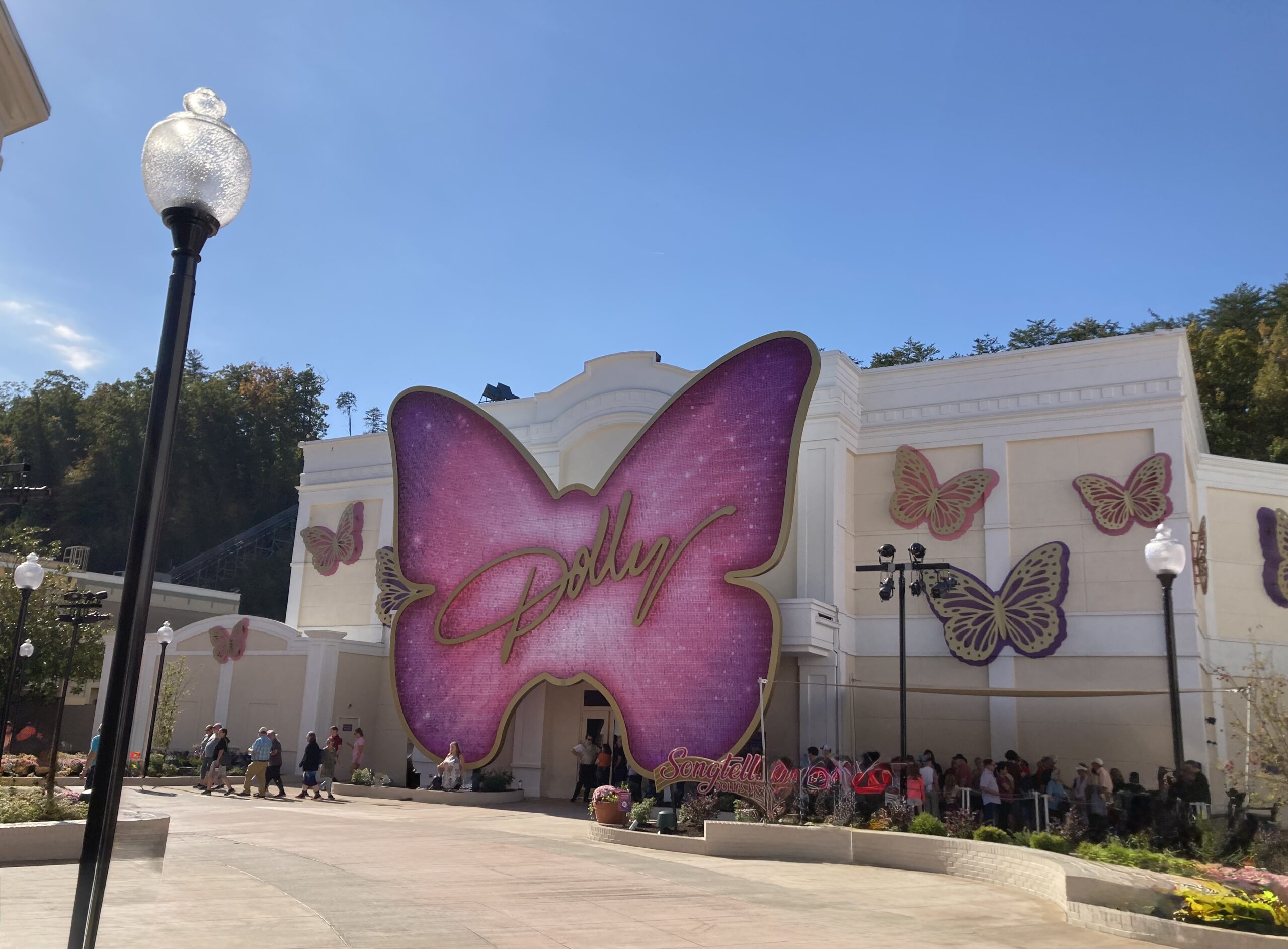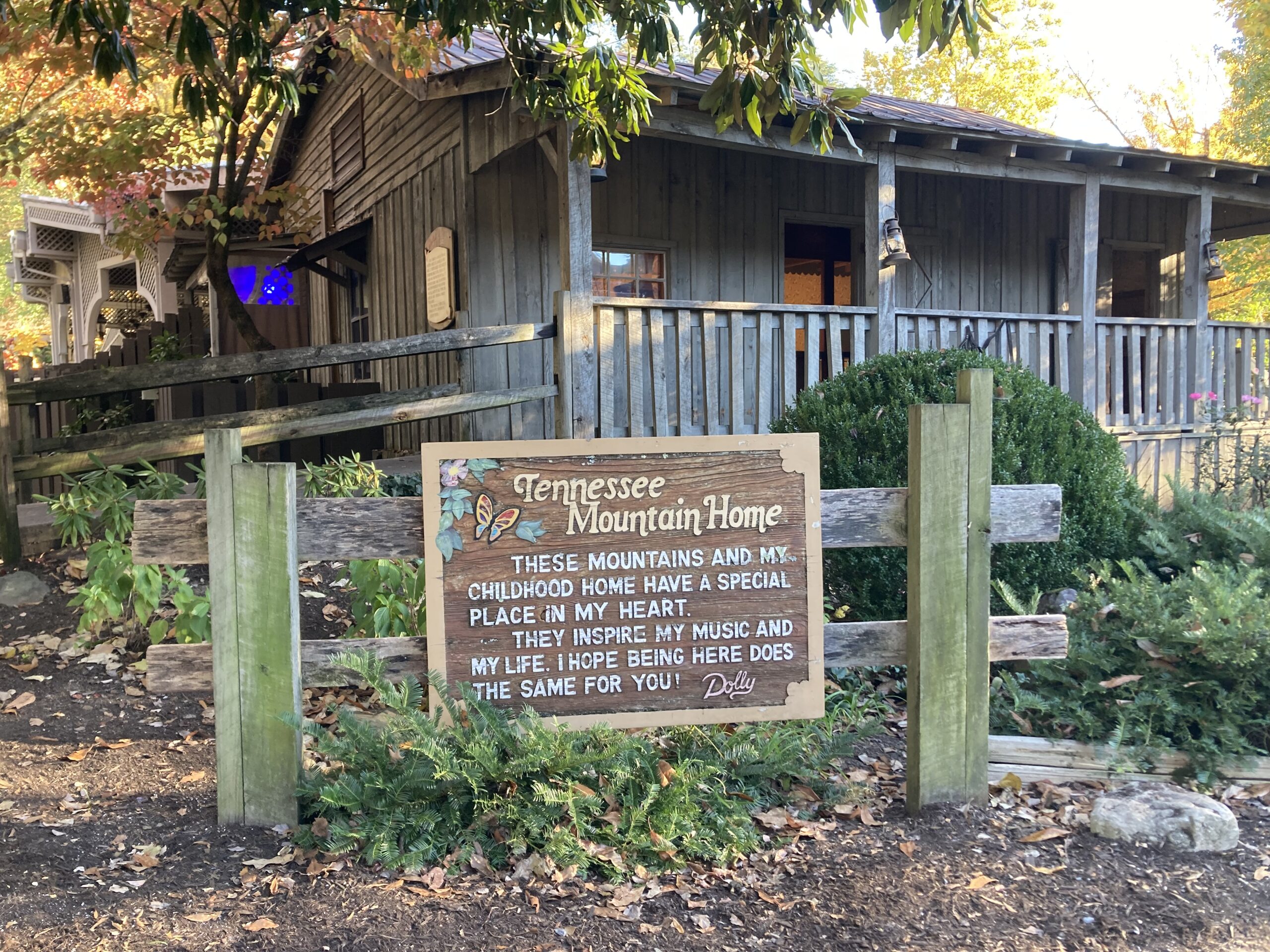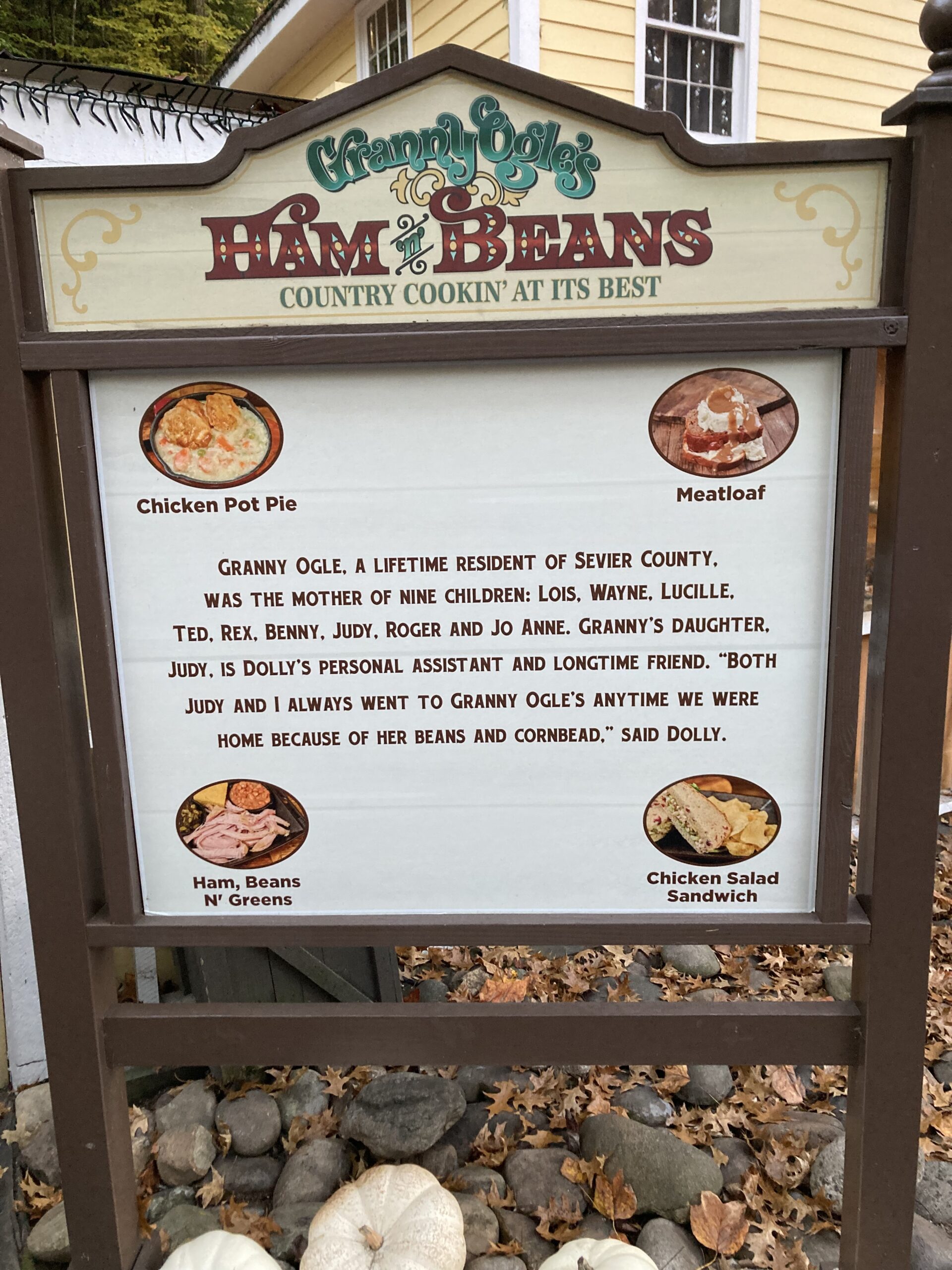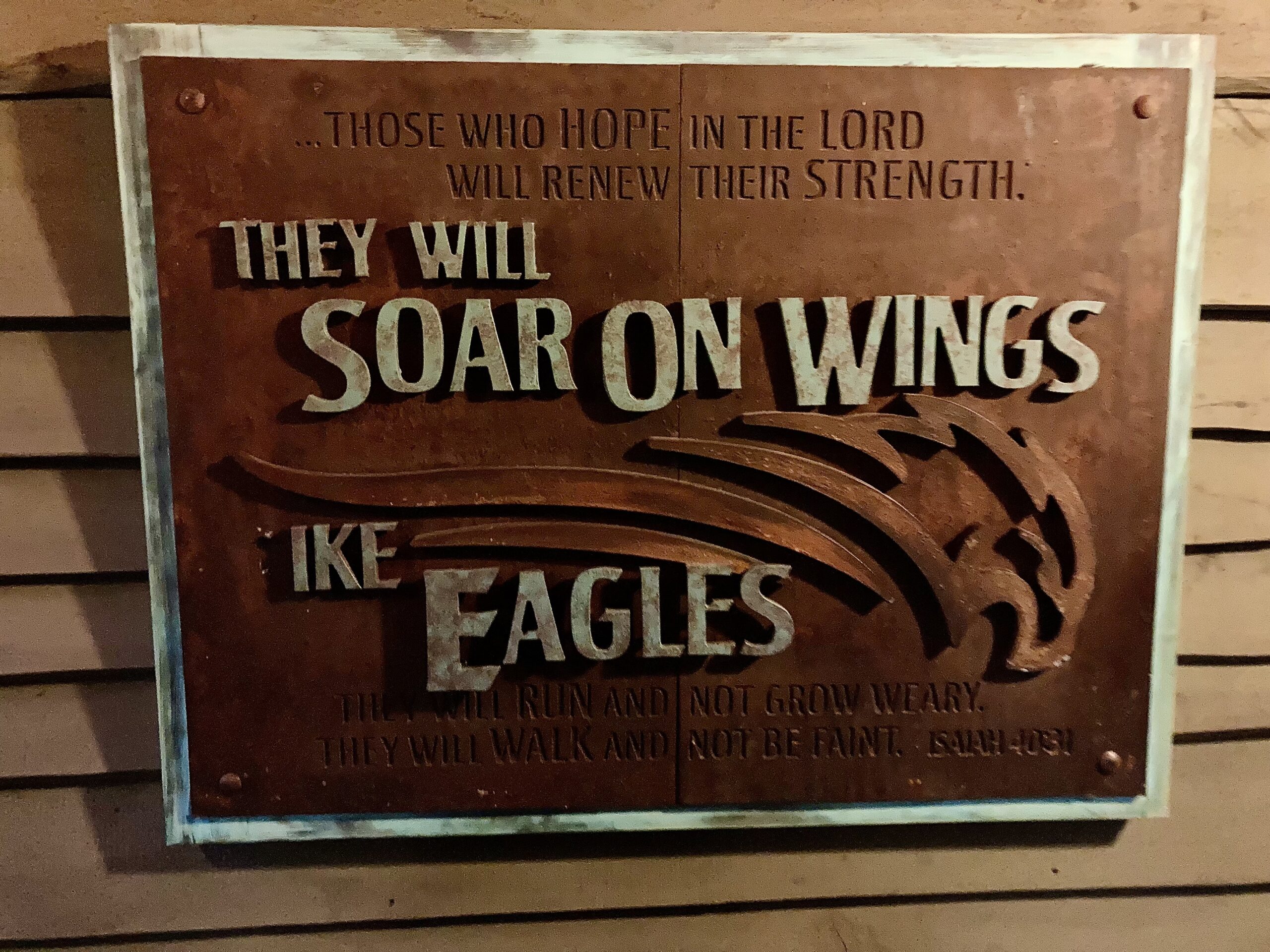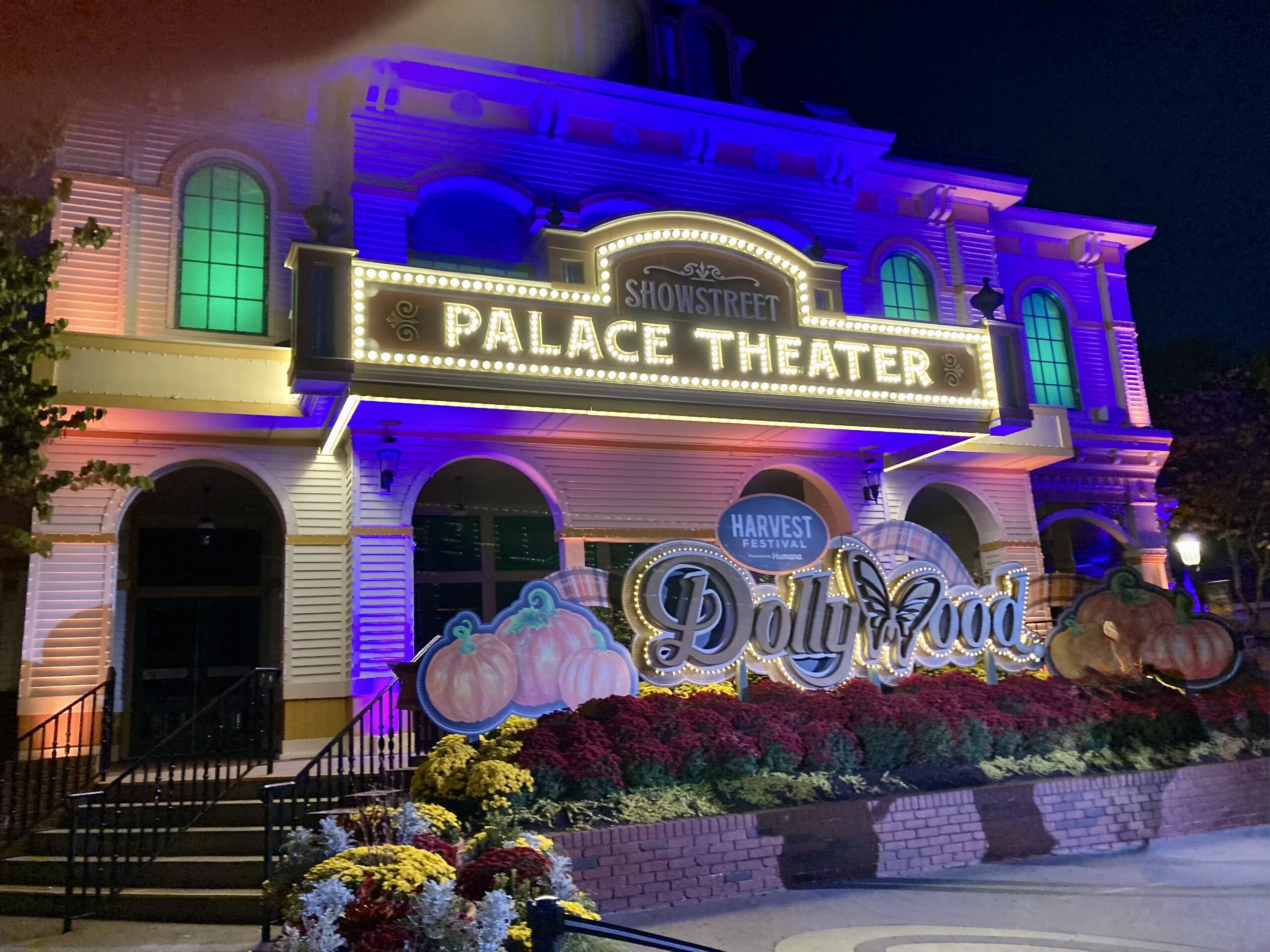Rachèl Blokhuis-Koopman
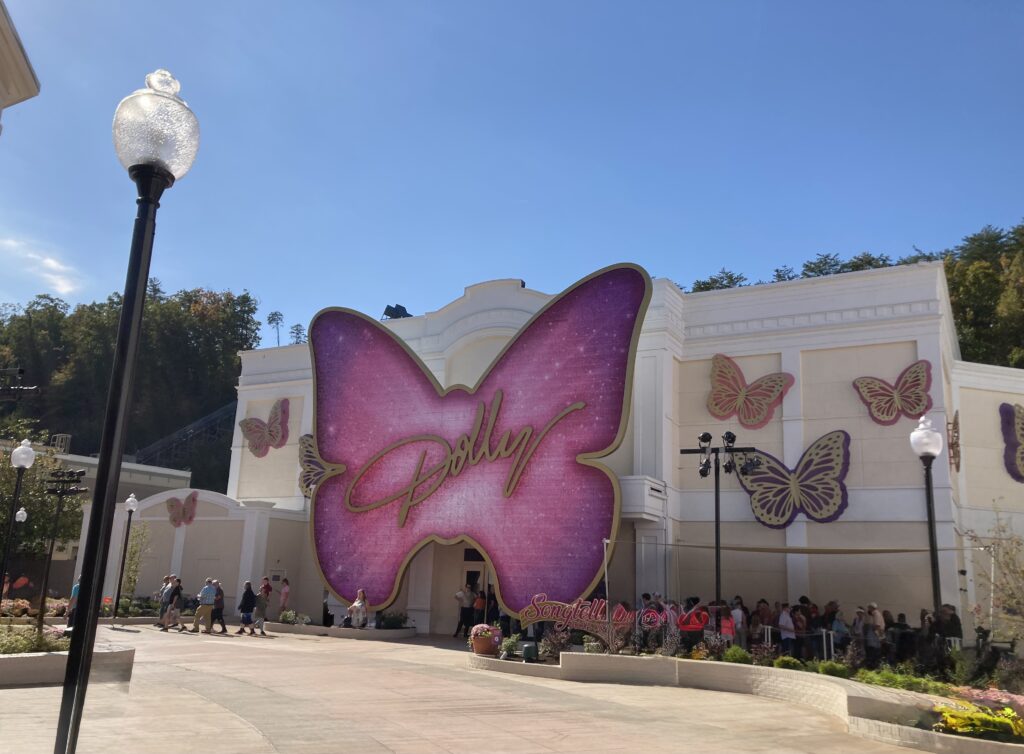
Deep in the rolling hills of the Great Smoky Mountains—a national park and UNESCO World Heritage site within the vast Appalachian mountain range—lies one of the most popular theme parks in the United States. Welcome to Dollywood, the theme park created by country music icon Dolly Parton in Pigeon Forge, Tennessee. In recent years, Dollywood has been repeatedly named America’s best theme park, attracting millions of visitors annually. The park prides itself on its ‘Dollywood difference’: a blend of Southern charm, friendliness, and hospitality that sets it apart. But what exactly does this ‘difference’ entail? How is it reflected in the park’s themes? And what role does American Christianity play in all of this?
Although the park was not always called Dollywood—the name was only introduced in the 1980s with Dolly Parton’s involvement—its history dates back to the early 1960s. What began in 1961 as a simple steam train attraction has grown into a globally recognized theme park. The train still runs through the park today as a tangible reminder of Dollywood’s origins. In 1986, the former Silver Dollar City Tennessee was rebranded as Dollywood, but from the very beginning, it was about more than just roller coasters. Parton dreamed of creating a “Smoky Mountain-fairytale land”—a sort of Disneyland of the American South—that would bring to life the spirit and heritage of her birthplace. One of her primary motivations was to create jobs while also allowing visitors to experience the beauty of the Smoky Mountains. Now, as the park celebrates its 40th anniversary with expansions including water parks, accommodations, and new attractions, it appears that Dolly has successfully fulfilled her mission.
As part of our MAKEBELIEF research into how theme parks represent religion, heritage, and nationalism, Dollywood presents a fascinating case. The park presents itself as American, infused with Christian and patriotic references. It also reflects a distinct regional mountain culture—albeit a selective version of it. This regional character is evident in several ways throughout the park. In Craftsman’s Valley, artisans showcase traditional crafts such as woodworking, blacksmithing, and basket weaving. Attractions reference industries like logging, mining, and the infamous production of illegal moonshine, all of which played significant roles in the region’s economy. Even the park’s aesthetics contribute to this atmosphere: music, storytelling, typography, and decorations align perfectly with the mountain theme. The restaurants also embrace this tradition, featuring servers in traditional attire and dishes like chicken pot pie on the menu.
However, this nostalgic depiction of mountain life raises questions about what is left out of this carefully constructed representation. The original inhabitants of the Smoky Mountains were Indigenous peoples, such as the Cherokee, yet there are no references to them in Dollywood. Instead, the park focuses primarily on the culture of the white mountain settlers who moved in after Indigenous displacement, including the Parton family. The nostalgic imagery experienced at Dollywood, therefore, presents a selective interpretation of mountain life.
Another element of exclusion in Dollywood is, of course, the persistent claim that the Appalachian region is solely inhabited by hillbillies , a stereotype the rest of the country looks down upon. This sentiment—that this region is the 'drainpipe' of America—also resonates in the thinking of U.S. Vice President J.D. Vance, whose memoir Hillbilly Elegy portrays the region as trapped in a cycle of poverty, despair, and cultural stagnation, not least due to the opioid crisis. In Dollywood, however, hillbilly heritage is celebrated—albeit with the rough edges smoothed out—by transforming the image into something positive and strong. Naturally, Dolly Parton is the driving force behind this; she wholeheartedly embraces her hillbilly roots and takes control of this image with self-deprecating humor and charm.
Another great strength of theme parks is their ability to create immersive experiences, blurring the lines between fiction and reality. Dollywood enhances this effect by not only recreating a nostalgic version of mountain life but also existing within the very world it seeks to represent. The Smoky Mountains provide the perfect backdrop: roller coasters wind through the hills, offering breathtaking views, while visitors stroll along winding paths surrounded by the region’s iconic colored foliage and mysterious blue mist. Dolly’s childhood home is just over a ridge from the park; a replica, complete with authentic furnishings and her father’s work boots, is on display inside. While Disney parks create fairy tale worlds and the Efteling evokes a medieval atmosphere, Dollywood uses the real world as its theme. Though visitors are well aware they are in a theme park—where every sight, sound, smell, and taste is meticulously curated—the nostalgic representation of mountain life, seen through Dolly Parton’s eyes, is reinforced by the park’s geographical setting.
The ‘Dollywood difference’ is further strengthened by its unique blend of American regional heritage and religion, embodied in Dolly Parton’s persona and country music. Music is a crucial part of the Dollywood experience. The park pays tribute to country, bluegrass, and gospel, with live bands performing on nearly every corner and numerous concerts held on Show Street. Even when there are no performances, classic gospel hymns play continuously through the speakers. This not only enhances the park’s theme but also reflects the deeply rooted religious traditions of the region. Visitors seem to find it perfectly natural to suddenly hear a country song proclaiming, “Jesus loves you.” This is likely one of the reasons the park attracts many churchgoers. Dolly herself frequently speaks (and sings) openly about the importance of faith in her life, which is further emphasized by the presence of a small country chapel where Sunday services are held and a pastor is permanently available.
Beyond these musical references to Christianity, the park features more explicit elements attributed to the Christian faith. Even when visiting Dollywood’s website, guests are immediately greeted with the park’s mission statement, which emphasizes operating “in a way that aligns with Christian values and ethics.” This ethos is visible throughout the park, from Christian-themed merchandise (such as stickers that say “Y’all need Jesus” or clothing from the brand Simply Southern, which combines Bible verses with Southern imagery) to roller coasters that carry religious messages. For example, at the entrance to the Wild Eagle roller coaster, a plaque displays Isaiah 40:31: “But those who hope in the Lord will renew their strength; they will soar on wings like eagles.”
The ‘Dollywood difference’ also lies in how the park’s Christian values attract a diverse range of visitors. Dolly Parton, for example, is celebrated as an icon in the queer community; her campy aesthetic, candid personality, and inclusive message make her especially beloved among LGBTQ+ fans, who also visit her park. At the same time, Dollywood remains popular among conservative church groups who feel at home with the gospel and country music, as well as the Christian messaging woven into the park experience. Additionally, Dolly Parton’s fanbase seems to transcend America’s deep political divide, appealing to both liberal and conservative audiences. Whether this translates into greater unity among visitors is another question. In this sense, Dollywood appears to be an extension of the values and message that Dolly embodies.
How does Dollywood’s appeal to such different audiences relate to its religious themes and connotations? And how do themes of inclusion and exclusion intersect here? These questions invite deeper reflection on the interplay between popular culture and theology, which is central to my research. This dynamic challenges us to consider how Dollywood is not just a theme park but also a cultural and spiritual landscape where visitors find meaning in different ways.
One illustration of this is the Dolly Experience, an immersive museum that opened in 2024. A striking feature is a large 360-degree space showcasing images, music, and a voiceover by Dolly narrating her life story—from her Christian upbringing to her music career. At the end, she quotes 1 Corinthians 13:13-15, but notably adds ‘acceptance’ to faith, hope, and love (the well-known Pauline virtues), giving her message a broader theological dimension (see YouTube Video, from 3.min37). This subtle reinterpretation of Paul reflects Dolly’s non-judgmental philosophy and can elicit various responses. Some visitors may barely notice the theological undertone, while others may see it as a powerful message of inclusion. This raises the question of how theme parks like Dollywood not only reflect but also challenge and redefine societal and religious narratives. Perhaps this is what truly makes the Dollywood difference.
